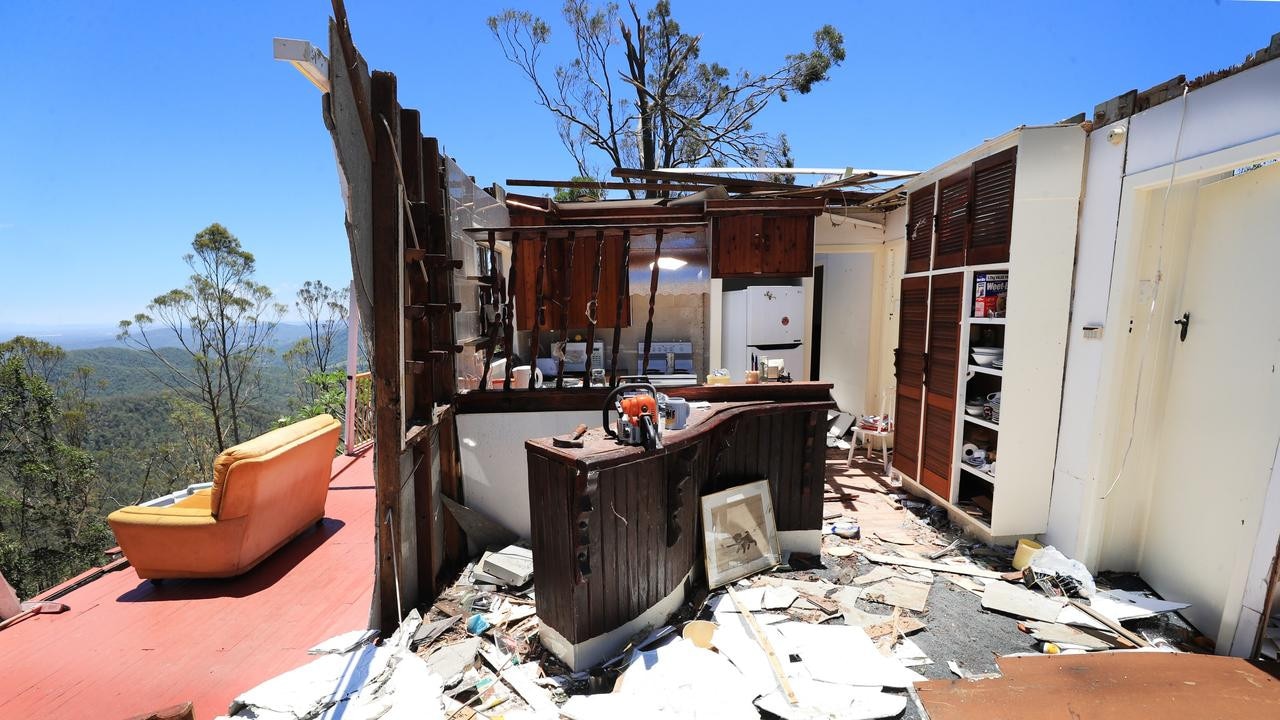‘Unprecedented’: New threat for storm-hit cities
A surprise heatwave is on the way for storm-hit areas of Australia and, with thousands still without power, it could become deadly.

Queensland residents are facing a heatwave just days after “unprecedented” storms wreaked havoc on coastal areas of the state, with some 50,000 properties still without power.
Queensland, NSW and Victoria have been hit by several vicious storms in quick succession since Christmas Eve, which downed powerlines, destroyed homes and killed 10 people, including a young girl.
Queensland Police Commissioner Katarina Carroll said the storms resulted in unprecedented damage, with record numbers of calls to State Emergency Services, police and ambulance.

“It is what I would say is an unprecedented disaster in this part of the world,” Ms Carroll said.
“We’ve never seen anything like this in this part of the world.
“The damage is extraordinary and it’s across such a large geographic area.”
“This is the first time we have seen a storm so intense that it has taken down concrete power poles,” added Queensland premier Steven Miles.
Some 50,000 properties were still without power on Thursday afternoon, with 10 per cent of those affected told they won’t be reconnected to the grid before the new year.


Heatwave and more storms to hit
Now, Queenslanders face a days-long heatwave and yet more storms — troubling news for those without power, who may not have access to fans, airconditioning or refrigeration.
Maps from the Bureau of Meteorology show low-intensity heatwave conditions across almost the entirety of Queensland between Friday and Sunday, as well as severe conditions in the state’s north and a pocket of extreme heat around the northwest.
Heatwaves can be highly dangerous, particularly for vulnerable communities and people, with extreme heat dubbed Australia’s “silent killer”.

Maximum temperatures of between 42C and 46C are forecast in western Queensland on Friday, as well as 37C in Brisbane — the state’s hottest December day in four years — 36C in Rockhampton and 35C in Bundaberg.
The BOM also forecasts a high of 32C for the Gold Coast on Friday, and 30C with possible thunderstorms on Saturday.
Cairns, which was also impacted by the wild weather, faces highs of 33C through to next week.

More storms are also forecast for central Queensland, though they aren’t expected to be as severe as those that hit earlier this week.
“We’ve had the fires already. We’ve had heat already, had a cyclone and now the thunderstorms, then back to the heat again,” BOM forecaster Steve Hadley said.
“There’s still a chance of thunderstorms through eastern parts of Queensland, but a lot of them are going to be north of Brisbane around Redcliffe, up through to the central coast around Mackay.”

When power will be restored
Energex said its teams were working in challenging conditions to have power restored to affected homes.
Images showed collapsed powerlines littering residential areas and houses that had been ripped open and gutted by the wind.
“The damage is so significant that we will have to rebuild the house network in those [most affected] communities,” Energy Minister Mick de Brenni said.
“The amount of vegetation down road access the heat that’s out there [has made for] very challenging terrain.”

About 90 per cent of affected properties are expected to be reconnected to power by December 31, with the remaining 10 per cent — mostly around Mount Tambourine and Jimboomba — told they will have to wait until the new year.
The SES confirmed crews from NSW were coming in to assist with the clean-up and recovery.
Financial assistance of $180 per person and $900 for families has been made available by the state government.
The requirements for a resident to claim assistance have been extended and 30,000 applications have been made so far.






